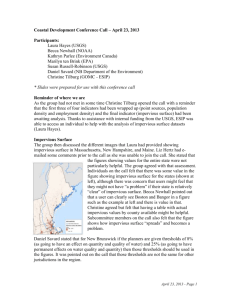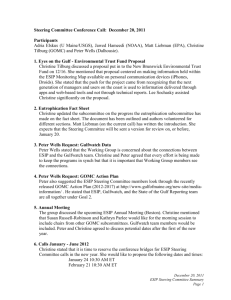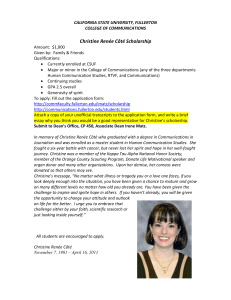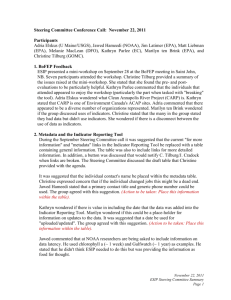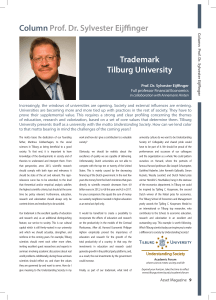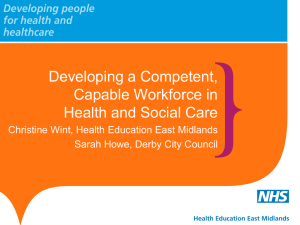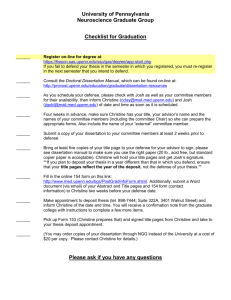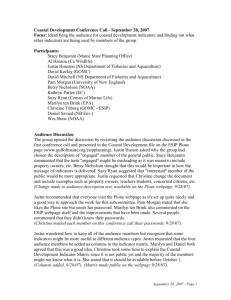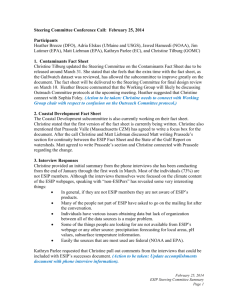Coastal Development Conference Call December 13, 2013
advertisement
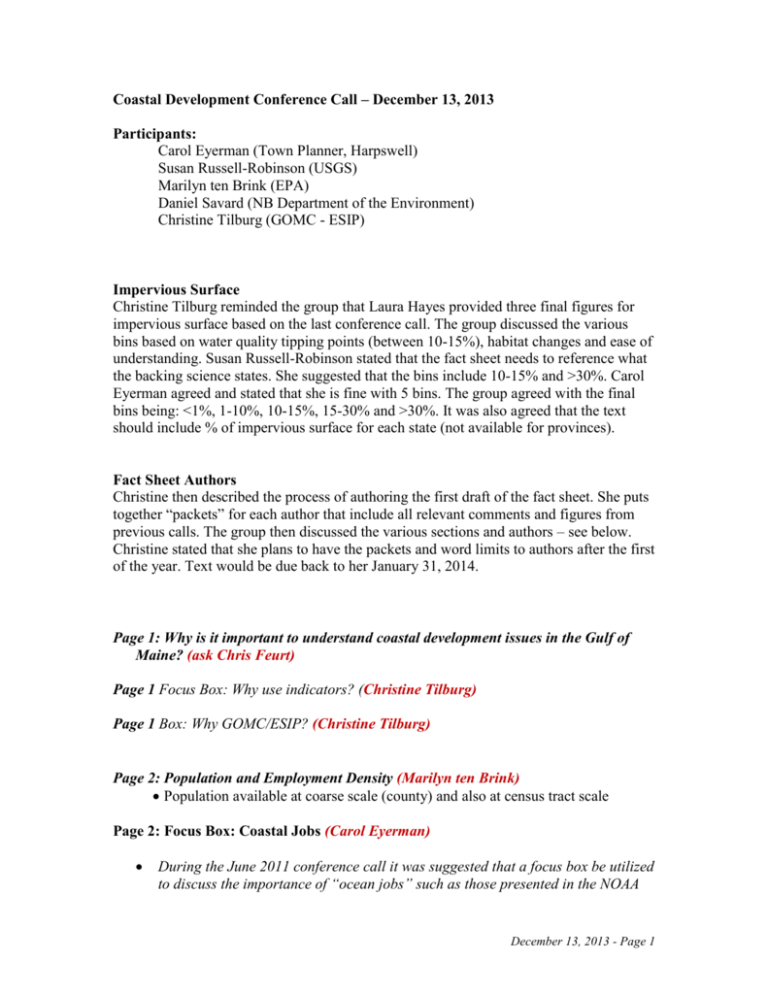
Coastal Development Conference Call – December 13, 2013 Participants: Carol Eyerman (Town Planner, Harpswell) Susan Russell-Robinson (USGS) Marilyn ten Brink (EPA) Daniel Savard (NB Department of the Environment) Christine Tilburg (GOMC - ESIP) Impervious Surface Christine Tilburg reminded the group that Laura Hayes provided three final figures for impervious surface based on the last conference call. The group discussed the various bins based on water quality tipping points (between 10-15%), habitat changes and ease of understanding. Susan Russell-Robinson stated that the fact sheet needs to reference what the backing science states. She suggested that the bins include 10-15% and >30%. Carol Eyerman agreed and stated that she is fine with 5 bins. The group agreed with the final bins being: <1%, 1-10%, 10-15%, 15-30% and >30%. It was also agreed that the text should include % of impervious surface for each state (not available for provinces). Fact Sheet Authors Christine then described the process of authoring the first draft of the fact sheet. She puts together “packets” for each author that include all relevant comments and figures from previous calls. The group then discussed the various sections and authors – see below. Christine stated that she plans to have the packets and word limits to authors after the first of the year. Text would be due back to her January 31, 2014. Page 1: Why is it important to understand coastal development issues in the Gulf of Maine? (ask Chris Feurt) Page 1 Focus Box: Why use indicators? (Christine Tilburg) Page 1 Box: Why GOMC/ESIP? (Christine Tilburg) Page 2: Population and Employment Density (Marilyn ten Brink) Population available at coarse scale (county) and also at census tract scale Page 2: Focus Box: Coastal Jobs (Carol Eyerman) During the June 2011 conference call it was suggested that a focus box be utilized to discuss the importance of “ocean jobs” such as those presented in the NOAA December 13, 2013 - Page 1 tool at www.csc.noaa.gov/snapshots. Although this information is also to be presented in part the Fisheries fact sheet, it can be covered in the coastal development fact sheet too. Page 3: Point Sources (Christine Tilburg and Marilyn ten Brink) This includes information broken into following questions (if possible): o Sewage versus industrial point sources (possible for US) o Major versus minor permitees (possible for US) Page 3 (Focus Box): Specific watershed example (Ask Julia Knisel/Pressade Velle) During the September 2010 conference call it was suggested that a specific watershed be utilized as an example to show the value of information regarding point sources upstream of towns or municipalities. Page 4: Impervious Surfaces (Susan Russell-Robinson) Include a table with impervious surface values by county (April 2013 call) Include an example of a metropolitan area in more detail Page 4 Side bar: Natural imperviousness (Daniel Savard) During the July 2013 call it was requested that a small side bar be included discussing the impact of natural imperviousness (NB) Page 4: Obtaining data for yourself via the Indicator Reporting Tool (Christine Tilburg) December 13, 2013 - Page 2
